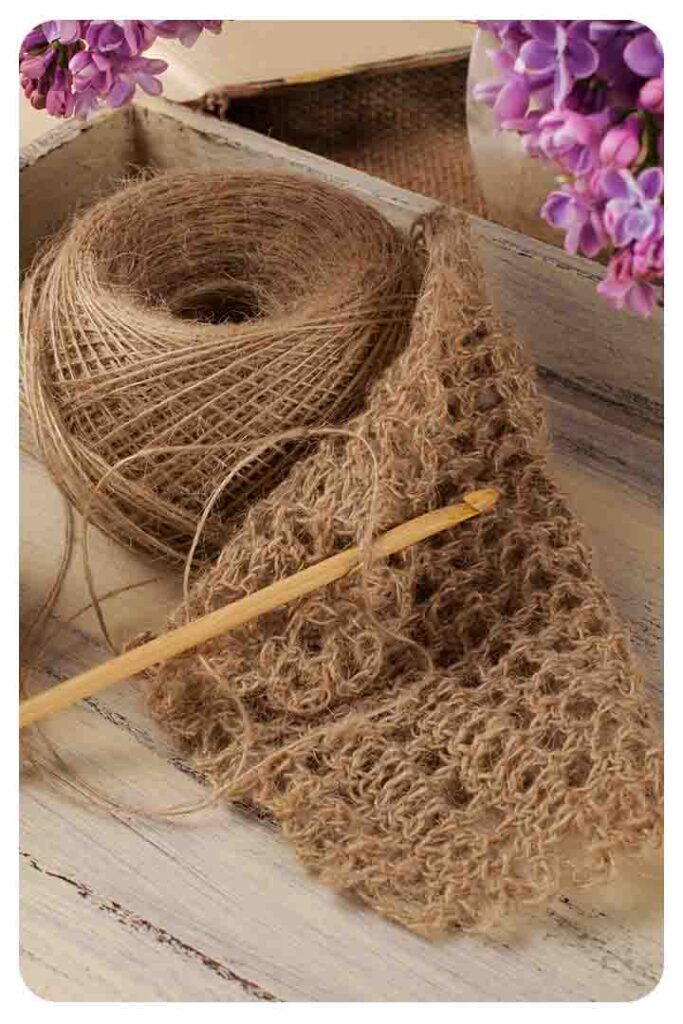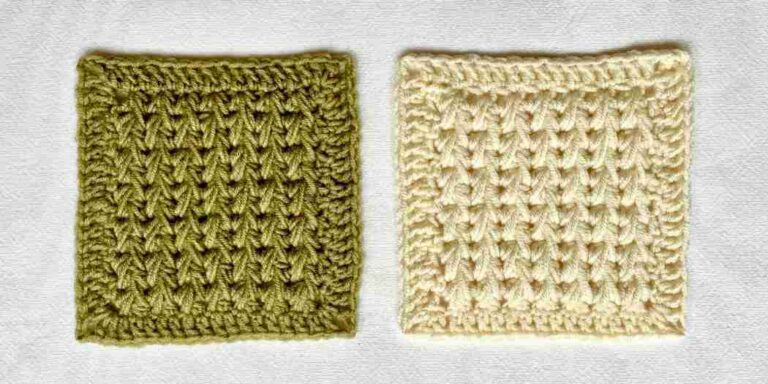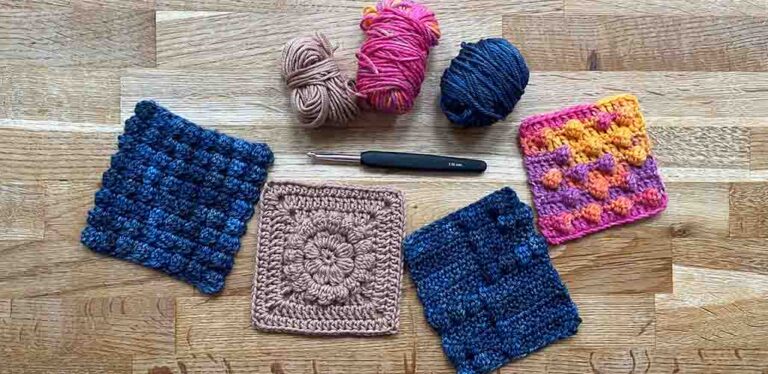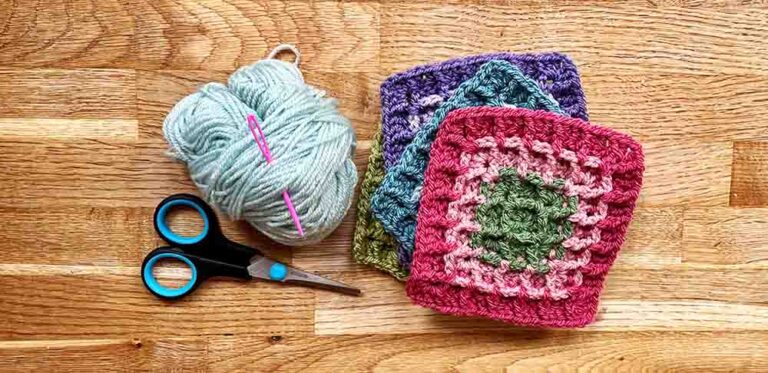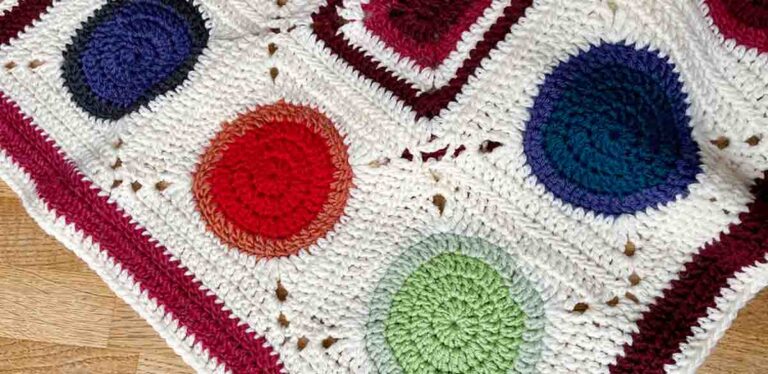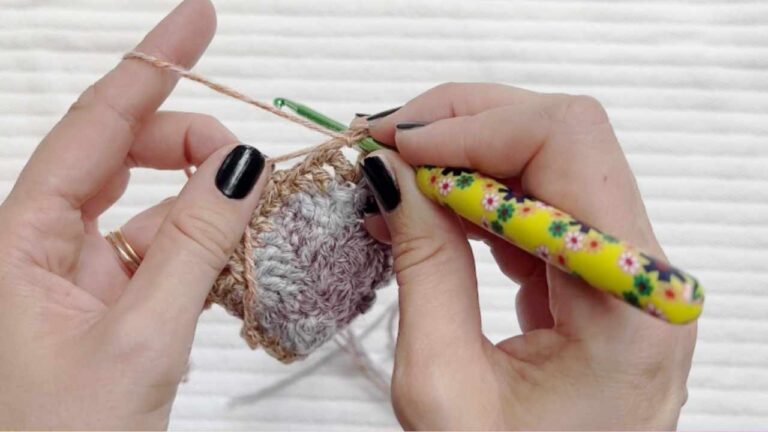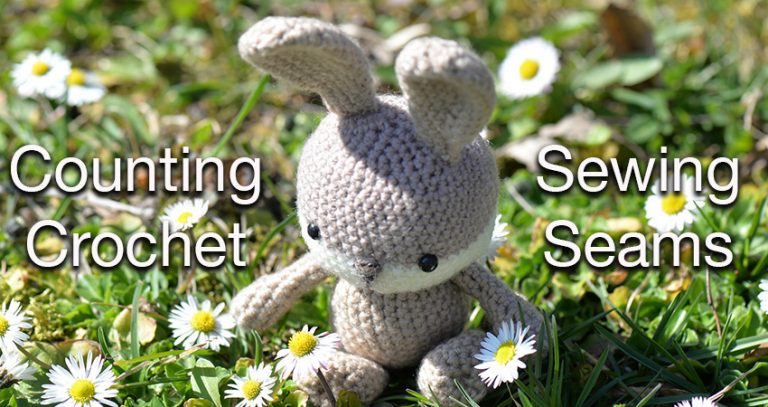Is It Better To Crochet Tight Or Loose?
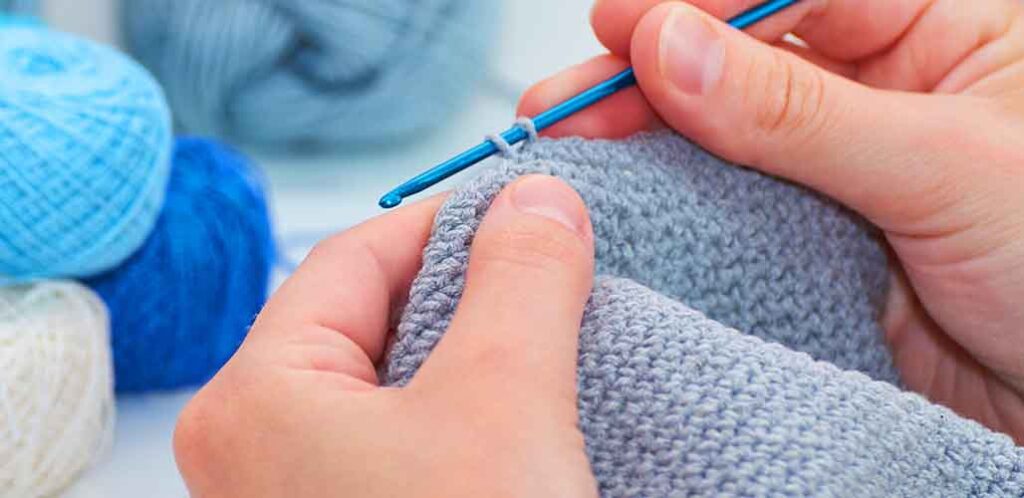
I quite often find my crochet doesn’t exactly match the gauge described in the pattern I’m working on. And I’m pretty sure I’m not alone. But if I can’t hit the gauge exactly, is it better to crochet tight or loose? And are there any times when nothing but accurate tension will do?
A tight crochet stitch is more rigid, and loose crochet drapes more fluidly. So I find it’s better to crochet tightly for projects that need to have structure or be self supporting. I crochet much more loosely for items which are going to be worn. Today I’ll share with you my hard earned tips for achieving the holy grail – crochet tension that is spot on.
- The role of tension in crochet.
- What happens when you crochet tight or loosely?
- Is one better than the other?
- How to achieve neutral tension.
The role of tension in crochet
I found mastering tension a real challenge. Tension refers to how tightly you wrap your yarn around your hook as you work. It directly affects gauge, which is how many stitches there are in a section of work which measures 4 inches by 4 inches.
As a crochet beginner, I initially found that I kept my tension too tight, and ended up with more stitches per square inches than I needed. As a result, my items turned out smaller than the pattern described. Conversely, if your tension is too loose, you’ll end up with fewer stitches per square inch, and your finished item will be bigger than you expected.
When your tension varies within the project, the result can be an unpredictable and wobbly shape too. But you can improve!
Over the year’s I’ve learned there are basically two elements to getting tension right:
- Being accurate.
- Being consistent.
Being accurate
Gauge is usually given in terms like
- 14 rows of 7 HDC = four inches x 4 inches (for a sweater in DK yarn)
- 26 SC = 4 inches (for a hat in 4 ply yarn – only one dimension is given because the item isn’t flat)
Accuracy means hitting those numbers as closely as possible, so that your finished sweater or hat matches the size promised by the pattern.
Being consistent
Lots of things can alter our tension – our mood, our energy levels, whether we’ve been drinking caffeine or alcohol, how quickly we’re trying to go, and even the music we listen to as we work! Learning to keep tension as consistent as possible, despite all these factors, is simply a matter of practice. But if it varies from one section to the next, the overall gauge is likely to be affected.
What Happens When You Crochet Tight
When you crochet tightly, you make smaller loops with the yarn, which means smaller stitches, and more stitches are needed to fill a square inch of space. Overall, this means your finished item will be:
- smaller
- more rigid
- more dense (ie. with fewer visible gaps between the stitches if you hold it up to the light)
You’ll probably find that your fingers start to get a bit tired and sore as you work too, since the yarn is pulled more tightly around the hook, creating more resistance. And you might also have difficulty inserting the hook through your work, or drawing yarn back in the other direction.
What Happens When You Crochet Loose
If you crochet loosely, you make big loops with the yarn, which means bigger stitches over all, and you’ll fill a square inch with fewer of them. Your work will be:
- bigger
- more fluid
- more gappy
You might find your working loop slips off the hook more easily too, and needs frequent recovering. Over several rows, you might also start to notice that your edges don’t look very straight, even though you’ve counted the number of stitches accurately.
Is It Better To Crochet Tight Or Loose?
Let’s face it, it’s actually better to crochet accurately, according to the gauge given for the project you’re working on! Crocheting tight or loose is going to produce a finished item which is either smaller or bigger than it was supposed to be. For projects with multiple sections which have to be joined, you’re likely to discover that the corresponding seams don’t turn out the same length either.
How To Achieve Neutral Tension
The best way to achieve the correct tension is to make a swatch of work before you start. Check the gauge in the pattern, work up a sample with the number of stitches and rows described, and check it matches the measurements given. It’s boring, like doing a patch test with hair dye, but it’s also important (like, well, doing a patch test with hair dye). In the long term, it will save you time and tears.
Here are some ways to improve your chances of achieve the right tension:
- Use the hook size and yarn weight recommended by the pattern. Always make a project the pattern designer’s way the first time. Save experimenting for next time, when you’re more familiar with it.
- Make yourself comfortable. Tension in your body is likely to turn into tension in your work. Sit comfortably, and use a hook grip to avoid cramp in your fingers.
- Try different ways of holding the yarn. There are lots of ways to hold your yarn, so compare and trial different methods to find one which complements or balances out your natural tension. Sprinkle a little talcum powder on your hands if they’re prone to getting clammy.
If your gauge is still tight or loose, it doesn’t necessarily mean you need to change how you crochet for the whole project. Different yarns produce different gauges, even if they are superficially the same (for example one DK acrylic vs another). And crochet patterns are written by humans, who might crochet tightly or loosely themselves. If your swatch doesn’t seem quite right, it’s always worth checking comments left by other crocheters who have followed the same pattern. They may well have had the same experience. Quite often they will leave details of how they overcame it too. For example using a slightly smaller or larger hook.
Times When Tight Crochet Is Good
Crocheting tightly isn’t always a bad thing. Tight stitches produce strong, durable, stiff crochet, which is ideal for homewares, such as storage baskets, trinket trays, place mats and rugs. Basically, anything you don’t want to stretch or flop over! Try coupling tight crochet with waistcoat stitch or moss stitch using a cotton yarn, to produce drip proof coasters and sturdy pots for pens (or crochet hooks!).
Tight crochet is also better than loose crochet for amigurumi and other items which are going to be stuffed, since it is denser. You’d rather not be able to see the stuffing peaking between the stitches!
In Praise Of Lovely Loose Crochet
On the other hand, loose crochet really lends itself to some specific types of project too, such as supple baby blankets and featherlight shawls. Try using soft natural fibers like silk-blend, merino or alpaca yarns to make sweater patterns in open lace crochet stitches, for the perfect amount of stretch and drape.
Sometimes, It Just Doesn’t Matter
Best of all (in my opinion!) are the projects where tension just doesn’t matter. Whilst it’s worth the effort when it matters, there’s no denying that it’s nice when you don’t have to think about it! Projects which generally turn out well at any tension are thinks like:
- scarves
- snoods
- blankets and throws
- facecloths
These items are good for practicing getting even tension, and working out whether you are generally a loose, tight, or neutral crocheter.
